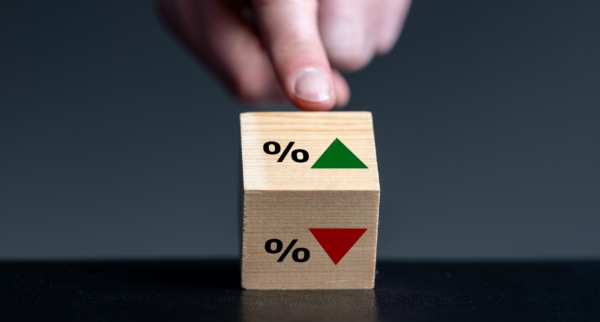Credit Utilization Calculator
Your credit utilization rate is the total outstanding balance across all of your credit cards (and other revolving credit lines) vs. your total available credit limit across all those same accounts. It’s a major factor in determining your credit score, which can affect loan approval, interest rates, and more.
Enter the outstanding balances and credit limits for each of your credit cards, and this credit card utilization calculator will instantly compute your overall credit utilization ratio, helping you gauge your credit health and make informed decisions to improve your credit score.
The debt you owe on revolving credit products has a significant impact on your credit score. It's called your credit utilization, and after payment history, it is the next most impactful factor affecting your score. It evaluates how much of the credit available to you that you're utilizing. Lenders rely on credit utilization ratios to understand how well people handle their lines of credit.
Frequently asked questions
What is a credit utilization ratio?
Your credit utilization ratio is the amount of credit you're using compared to the amount of credit that's available to you. Only revolving products such as credit cards are used to determine your credit utilization. Loans that you pay in even installments over a fixed term are not part of the equation. Therefore, the amount you owe on such obligations as mortgages, car loans, and personal loans live outside the equation.
A credit utilization ratio will evaluate both per card balances as well as the total for all of your cards. So if you have just one credit card with a limit of $1,000 and owe $500 on it, you will have a credit utilization ratio of 50%. If you have three credit cards with a combined credit limit of $5,000, the calculation can be a little more complicated. You may have maxed out one card, owe a little on another and owe none on the last. That's where a credit utilization calculator comes in handy.
What is a high credit utilization ratio?
What is a good credit utilization ratio?
The general rule of thumb is keep at least 70% of your credit lines open, both on individual accounts and in aggregate.
That means if you have a credit card with a $1,000 limit, you should be keeping the revolved balance at no more than $300. And if you have three credit cards with a $10,000 total credit limit, owing under $3,000 is best.
However, this does not mean that revolving a balance of any amount is necessarily a positive thing. Using your credit card regularly and paying off the bill in full by the bill date should guarantee a 0% credit utilization ratio, and that's not only great for your credit score and a good sign to your lender that you are handling your credit products responsibly, but it will also keep you out of expensive debt.
Why does your credit utilization ratio matter?
Lenders want to see how you have been managing revolving credit products. A low credit utilization ratio can be an indication that you are using credit cards as payment tools versus as a means to get by when you don't have enough cash to pay for necessary expenses. A high credit ratio can also indicate financial irresponsibility, and that you're charging the things that you want but can't afford.
How is credit utilization calculated?
Gather all of your credit cards with their balances. You may have to go online or use the mobile app to obtain the most current figures. You'll also need the credit line information for each card.
- Add up all the outstanding debt.
- Add up the credit limits.
- Divide the combined sum of your balances by the total credit limit.
- Multiply that figure by 100. That will be your credit utilization ratio as a percentage.
Or, simply input your data into our credit utilization ratio calculator for easy results!
Can lowering your credit utilization ratio raise your credit score?
Yes, a low credit utilization ratio can have a positive impact on your credit score.
The most commonly used credit scoring system is the FICO Score. The most important scoring factor is your payment history, at 35%. Just under that, though, is your credit utilization at 30%. Consequently you could have made all of your payments perfectly on time, but if you have used up a good portion of your credit lines, your score could be negatively impacted.
The good news is that if you take steps to broaden your credit utilization ratio, your credit score should improve quickly.
How to lower your credit utilization ratio
The most direct way to lower your credit utilization ratio is to pay down your credit cards. Take a look at each account and delete the balance so that it is well below 30% of your credit line. The next time your FICO Score is calculated, it will be on the reduced ratio so you should see a jump in your score.
In the event you do not have the financial ability to pay those debts down swiftly, there are a few techniques that you can use that could open up your ratio without having to wait:
- Utilize a balance transfer credit card. With a balance transfer credit card you may be eligible for 0% APR for a specific time-frame, such as 12 or 18 months. If you can move all or the majority of your debt to the new credit card and there is plenty of room left over on that account, you now have an advantage of two credit cards, one that is empty and another that is not maxed out. (It will reduce the length of credit history, another factor of credit score calculation, but it's only 15% of a FICO score and the effect can be temporary when you handle the new card well.) Even if the balance that is absorbed by the new card is high compared to the credit limit, making large, steady monthly payments without having finance fees attached to it can help you get out of debt much more efficiently. Balance transfer credit cards do tend to have transfer fees associated with them, which are usually between 2% and 5% of the absorbed debt, but because interest will not be applied during the introductory period, it can save you a lot of money as long as you pay your balances off, or heavily down, before regular APR applies.
- Request a credit line increase. If you have had a good relationship with your credit card company you may appeal to them for a larger credit line. That can automatically broaden your credit ratio. For example, if your current credit card has a credit limit of $1,000 and you owe $900 on it, your credit ratio is 90%. But if they agree to increase your credit limit to $3,000, your credit utilization ratio drops to a much healthier 30%.
- Obtain a debt consolidation loan. You may be eligible for a debt consolidation loan, where the lender will take on your credit card balances. In that case, you are switching revolving debt for installment debt. Since loans are not included in a credit utilization ratio, you should see a spike in your credit score because the credit cards that were full will now be empty. Just make sure the loan is sensible. Many lenders charge origination fees which will add to the balance, and you will want to be certain that the interest rate that you get is less than what you have on the credit cards so that it doesn't create more of a financial burden. The monthly payments should also be reasonable so that you don't struggle and fall behind.
Is credit utilization calculated per card or total?
Your credit utilization is a snapshot of how much of your available credit you're currently using. It's calculated by dividing your total credit card debt by your total credit limit. Think of it as a gauge: the lower the reading, the better your credit score.
This means your entire credit portfolio is in play, not just individual cards. Every card you own contributes to the equation.
Can credit utilization impact credit card approval?
Yes, credit utilization can significantly impact your credit card approval as credit card issuers use credit utilization as a key factor to assess your creditworthiness.
It's not just about the individual cards in your wallet, but the collective weight of your credit debt. Every card, every limit, and every balance contributes to your overall credit utilization. So, even if one card is maxed out, it can drag down your creditworthiness, potentially making it tougher to get approved for new lines of credit.
If you have one credit card with a $300 balance and a $1,000 limit, what would your utilization be?
What is 30% of a $5,000 credit limit?
Cards by category from our partners
How we calculate savings: Our algorithm factors in the introductory balance transfer rate, length of the introductory period, balance transfer fee, ongoing interest rate, and the annual fee to calculate savings and the time needed to pay off a balance. The algorithm is designed to yield reasonably accurate results but final outcomes may vary.





